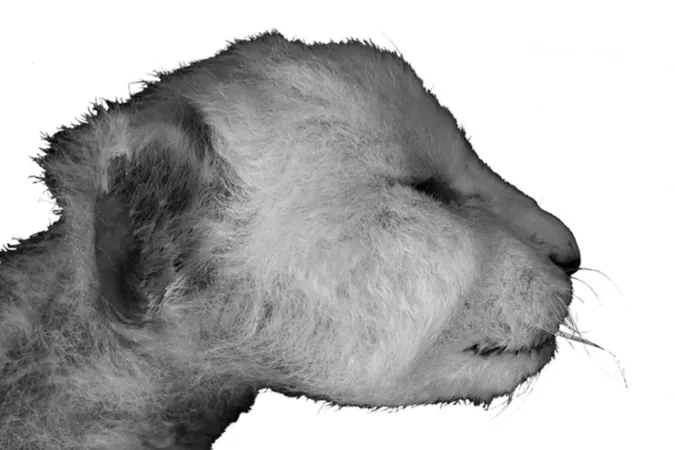
Stunning Saber-Tooth Cat Cub Unearthed in Siberia: 31,800-Year-Old Relic Provides Insight into Prehistoric Life!
2024-11-15
Author: Wei
Introduction
In a remarkable scientific breakthrough, researchers have recently described an extraordinarily well-preserved saber-tooth cat cub discovered in Siberia’s permafrost, a chilling reminder of the Pleistocene Epoch. Unearthed in 2020, this cub, believed to have lived around 31,800 years ago, adds to the uniqueness of the region, a hotspot for finding ancient specimens.
Significance of the Discovery
The excavation site provided a near-complete mummy that includes the cub’s head, one forelimb, and various parts of its body, making it an invaluable resource for paleontologists aiming to reconstruct the appearance and behaviors of this extinct predator. The detailed study, published in the renowned journal *Scientific Reports*, sheds light on the subfamily of saber-tooth cats known as Homotherium latidens.
Insights from Research
Lead researcher Alexey Lopatin from the Borissiak Paleontological Institute in Russia commented, "This mummified cub allows us to confirm the previously reconstructed appearance of Homotherium based on adult remains. It gives us vital information regarding its fur color, facial structure, and even the shape of its foot pads—details that cannot be determined from bones alone."
Comparison with Other Discoveries
Significantly older than the previously discovered cave lion cub, which was found not too long ago and dated to approximately 28,000 years, the saber-tooth cat cub provides a fascinating snapshot of a time when both these formidable predators lived. The cub's vibrant existence ended long before the earliest known cave paintings at Lascaux were created.
Physical Characteristics and Geographical Range
The saber-tooth cat is identified as Homotherium latidens, commonly referred to as the scimitar-tooth cat. Distinct from other saber-tooths like Smilodon, Homotherium was designed for endurance, sporting shorter incisors and a leaner physique, even more so than modern lions. This discovery confirms that, during the Late Pleistocene, this species roamed parts of Asia, illustrating a wider geographical range for these extraordinary creatures.
DNA Extraction Possibilities
In addition to the striking physical characteristics, Lopatin emphasized the potential to extract DNA from the mummy, as its muscular and skeletal tissues have remained remarkably intact due to the permafrost. This opens the door for further genetic analysis, allowing scientists to explore a wealth of information about the ecosystem at that time.
A Broader Trend in Paleogenetic Research
The recent discovery is part of a broader trend where mummies found in permafrost have been yielding exciting results in paleogenetic research. Over the years, other phenomenal discoveries, such as a well-preserved baby woolly mammoth found in Yukon, have captivated the scientific community and rekindled interest in prehistoric biodiversity.
Conclusion and Future Research
As Lopatin noted, the ongoing research in areas like Yakutia, where this cub was found, continues to reveal new treasures from our planet’s past. The saber-tooth cat cub stands not just as a relic of history but as a gateway to understanding the lives of animals that once roamed earth tens of thousands of years ago. Stay tuned as scientists delve deeper, potentially uncovering more astonishing details about this magnificent saber-tooth cat and its ancient world!




 Brasil (PT)
Brasil (PT)
 Canada (EN)
Canada (EN)
 Chile (ES)
Chile (ES)
 España (ES)
España (ES)
 France (FR)
France (FR)
 Hong Kong (EN)
Hong Kong (EN)
 Italia (IT)
Italia (IT)
 日本 (JA)
日本 (JA)
 Magyarország (HU)
Magyarország (HU)
 Norge (NO)
Norge (NO)
 Polska (PL)
Polska (PL)
 Schweiz (DE)
Schweiz (DE)
 Singapore (EN)
Singapore (EN)
 Sverige (SV)
Sverige (SV)
 Suomi (FI)
Suomi (FI)
 Türkiye (TR)
Türkiye (TR)